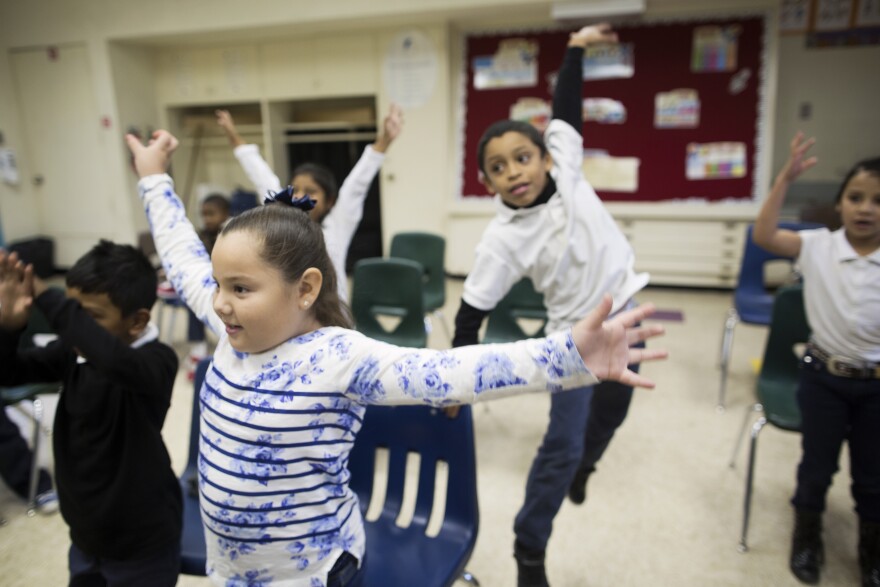With our free press under threat and federal funding for public media gone, your support matters more than ever. Help keep the LAist newsroom strong, become a monthly member or increase your support today.
Study shows extreme wealth gap for LA's children

Children in Los Angeles are living in separate worlds when it comes to wealth.
A new report from the Public Policy Institute of California looked at poverty rates among young children in the state. Researchers found that the biggest gap in California is between two different parts of L.A. County.
The area with the least amount of poverty is in the southwestern part of the county — Redondo Beach, Hermosa Beach and Manhattan Beach. Only about four percent of young children between the ages of zero and five live on incomes below California's poverty measure.
In the southeastern part of the county, nearly 68 percent of young children live in poverty.
It's not unusual to see massive differences in poverty rates across the state, said Sarah Bohn, research fellow at the PPIC.
"But just one neighborhood to another can mean really, really stark differences in the family circumstances for young children," she said.
Bohn said policymakers are particularly interested in very young children because there's a growing body of research on how profoundly experiencing poverty at a young age can impact a child into adolescence and adulthood.
"How poverty may be related to toxic stress that hampers development, even brain development, that leads to really adverse consequences," she said. "So it's a focal point for targeting investments."
Among the study's other findings was a difference in urban versus rural poverty. Families in coastal cities tend to struggle the most with housing costs, spending over half their income on shelter. In far northern California and the inland communities, however, lack of job opportunities seemed to be a major driver of poverty. Rural families also tend to participate more in social safety net programs like CalFresh, the state's food stamp program.
Jessica Bartholow, a legislative advocate for the Western Center on Law and Poverty, said the disparities show that different strategies may be needed to address poverty in different areas.
"It's definitely a risk you see in the capitol, some legislators emphasizing certain solutions to poverty and homelessness, and other legislators emphasizing others," she said. "Usually it has to do with the way poverty plays out in their own communities."
Bartholow said she recently met with a group of officials who administer public benefits in the state's tribal areas, which are struggling with job access.
"They told me in one of their communities, unemployment is 80 percent," she said. "This is something for an urban community, they just don't have a sense of. It doesn't matter how much reduced price housing you have, if 80 percent of the people in your community don't have a job."
Bartholow said the vast wealth disparities in California can also make it difficult to advocate for anti-poverty programs.
"If you don't see poverty, it doesn't seem like a problem you have to fix," she said, adding that the current legislature, which has several leaders who grew up in and around poverty, has been receptive to fixing the problems.
The PPIC study, released late Wednesday, compiled census information along with data from California's public agencies. The California Poverty Measure, developed by researchers from Stanford University, is different from the federal poverty measure. While the federal poverty measure sets a national baseline of cash income, California's poverty measure factors in the cost of living, as well as benefits a family receives, like food stamps.
The full report is available here.







